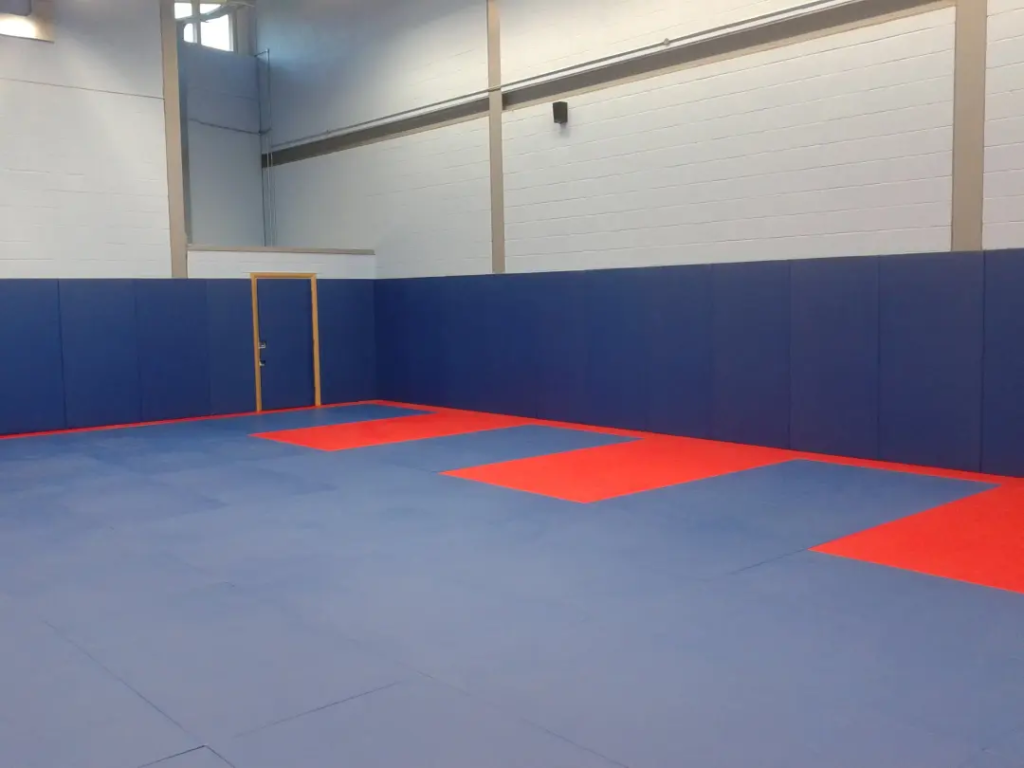
The first rule in any training room feels simple enough: protect the people before protecting the paint. Hard walls do not forgive mistakes. One wrong step, one mistimed throw, and the session can end early. Wall mats turn hard edges into safer surfaces, which changes how coaches plan drills and how athletes commit to movement.
A panel looks modest, yet the build tells another story. The surface gives slightly on first touch. Beneath that, denser foam slows momentum without launching a body back into play. The stack reads like a small suspension system. Too soft and you sink. Too hard and you jar bones. Good design aims for the middle, where impact spreads, breath returns, and training continues.
Fit matters as much as foam. Panels must meet cleanly from corner to corner. A finger-width gap can catch a shoulder during a spin. The cover does quiet work too. Vinyl resists sweat, chalk, and abrasion. Seams hold the line under repeated hits. Adhesive and backing board keep the panel steady so it absorbs force instead of sliding. None of it looks dramatic, but it keeps bruises from becoming stories.
Rooms fitted with wall mats often become more useful. Instructors push drills closer to boundaries. Grapplers practise takedowns without shrinking the mat space. Gymnasts rehearse off-line recoveries near apparatus. Even school gyms benefit when wet weather moves play indoors. The perimeter stops being off limits and starts serving the plan.
Behaviour shifts when the room signals safety. Athletes take sharper angles, quicker turns, fuller sprints. That confidence is not blind faith. It grows from many small contacts that end well. Each safe stop teaches the body that trying again makes sense. Progress needs that freedom. Fear slows learning; protection lets it breathe.
Maintenance keeps promises honest. Foam compacts over months of use. Surfaces loosen. Sweat and dust make panels slick. A quick press test tells the truth. If the panel feels tired, it likely is. Replacing a worn section may look expensive, yet medical bills and lost training time weigh more. Regular checks turn into a quiet ritual that protects the season.
Different sports pull the build in different directions. Judo prefers thicker cores to absorb throws. Gymnastics leans slimmer near balance zones to preserve footing. Fitness studios want easy cleaning. Schools like lighter panels for simple installs. Modular designs help all of them. You can add height near climbing areas or remove a section for doors without exposing bare wall.
Do wall mats change how people move? Evidence suggests they do. Coaches report fewer pulled sessions after collisions. Athletes report lower hesitation near boundaries. Even spectators sense the change when a fast break ends safely instead of painfully. It is not magic. It is physics done patiently.
Sustainability enters the conversation as well. Some makers test recycled foam, water-based glues, and low-emission coatings. The challenge sits in balancing durability with greener materials. Progress looks steady rather than sudden, yet the direction seems clear. Safer rooms should not ask more from the planet than they need.
Branding sometimes gets involved. School colours, team marks, sponsor prints. That custom look can help morale, but the performance still matters most. A pretty panel that fails on impact becomes decoration, not protection. Coaches learn to judge with hands, not eyes.
Wall mats work best as part of a system. Floors cushion falls. Corners get extra coverage. Doors gain padding where hands swing wide. Clear rules plus good surfaces build a culture that respects effort and minimises harm. The room becomes a partner, not a risk.
Training asks people to try, fail, and try again. Protection should keep that cycle alive. When collisions happen, a good panel makes the moment brief and forgettable, which is exactly the point. The wall stays quiet. The session goes on. Ambition gets another rep.

